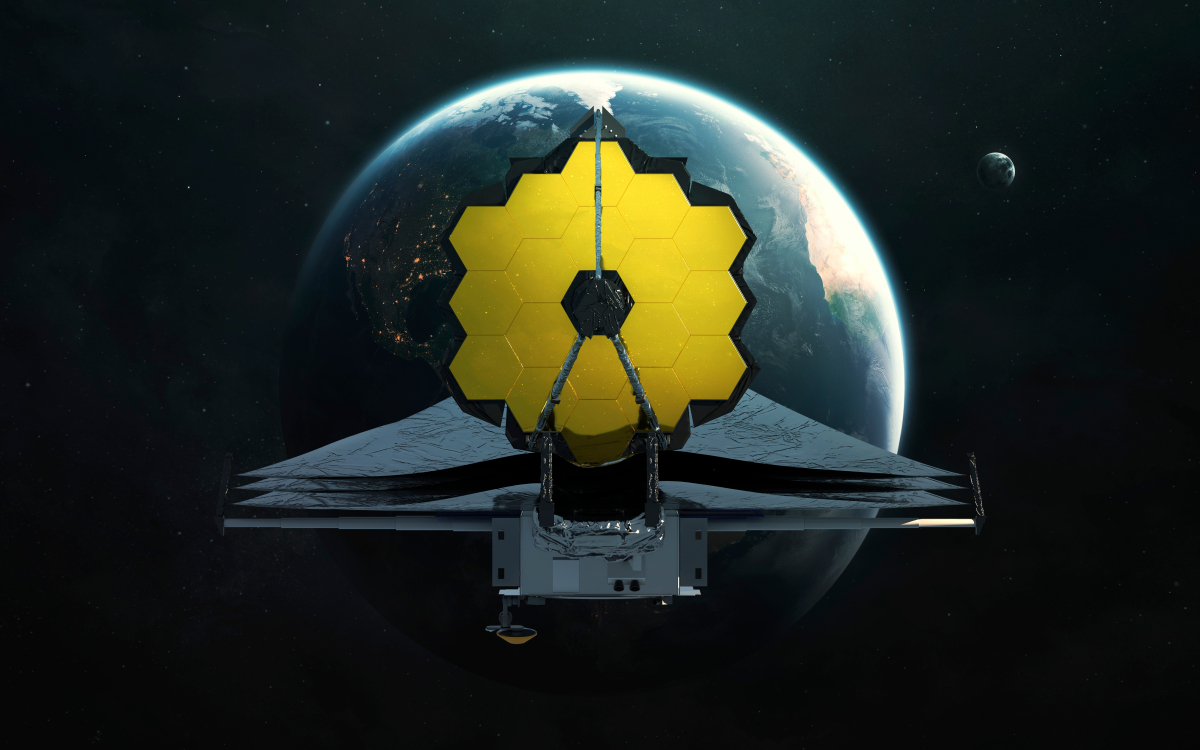James Webb observes space with his infrared technology like no other telescope before. The researchers continue to be excited about how the telescope works and its images. There is certainly no shortage of amazing achievements and facts about the space telescope. Here are eight things you might not know about James-Webb.
There is a temperature difference between the front and back of the telescope of about 300 degrees. According to NASA, the side facing the sun, including the solar panels, is up to 85 degrees Celsius. On the other hand, where the mirrors and instruments are located, it is -233 degrees. The telescope must be very cold in this aspect so as not to constantly record itself with its infrared measuring instruments and thus falsify the data and images.
Each year a new decision is made on which observations James Webb should address next. In theory, anyone in the world can apply for this – offers are screened and evaluated by a time allocation committee. Except for a few embargo periods, the data collected is also publicly available and can be used for your own scientific investigations.
In fact, the telescope provides so much data that astronomers can hardly keep up with verification. The fact that new studies are being published faster and with fewer examinations has already sparked discussions among scientists.
The telescope canopy is a sail the size of a tennis court. The telescope weighs nearly six tons and the featured mirror is more than two stories tall. All components had to be designed so that they could be folded to save space so that they could be transported into space using a rocket. Once there, the telescope had to fold up on its own. An error in this process may jeopardize the entire task.
The farther away the star is from us, the longer it takes for the light to get from there to Earth – or to the James Webb Telescope. So when viewing distant star systems, the telescope is looking straight into the past. James Webb investigates galaxies that may have formed a few hundred million years after the Big Bang. This is a glimpse into the past of more than ten billion years, because the Big Bang is said to have happened 13.8 billion years ago.
James Webb Space Telescope: the most beautiful pictures and their meaning:
James Webb Telescope: the most beautiful pictures and their meaning
A space observatory traverses space in such a way that it always stays at the same distance from Earth. However, the Sun must always be aligned in such a way that it cannot target certain parts of our solar system, including the Earth and Moon.
The James Webb telescope is farther from Earth than any other human – about 1.5 million kilometers. Unlike its predecessor Hubble (560 kilometers from Earth), this makes the telescope impossible to maintain, for which it is not designed. Important systems are on board several times so they can be used in the event of a defect.
Editor’s recommendations
As early as 1989, NASA organized a workshop to explore the possibilities of a successor to the Hubble Telescope. It took more than 30 years from the initial idea to the launch of the James Webb Telescope. In 2004 construction of the first parts of the telescope began.
Thus, Webb’s telescope has likely been in planning for longer than it has been in use, because its service life is planned to be about ten years. However, the telescope has had fuel on board for more than 20 years. And in 1989, Hubble was still only supposed to last until 2005.
It is said that James Webb cost more than 8.8 billion euros, which is much more than was originally estimated. Accordingly, NASA had to ask critical questions from American politicians, who were not satisfied with such an explosion in costs.

“Total coffee aficionado. Travel buff. Music ninja. Bacon nerd. Beeraholic.”









More Stories
Coral Seeding: Artificial Insemination Makes Coral More Heat Tolerant
Fear, Anger, and Denial: How People Respond to Climate Change – Research
LKH Graz: Using radiation to combat heart arrhythmias